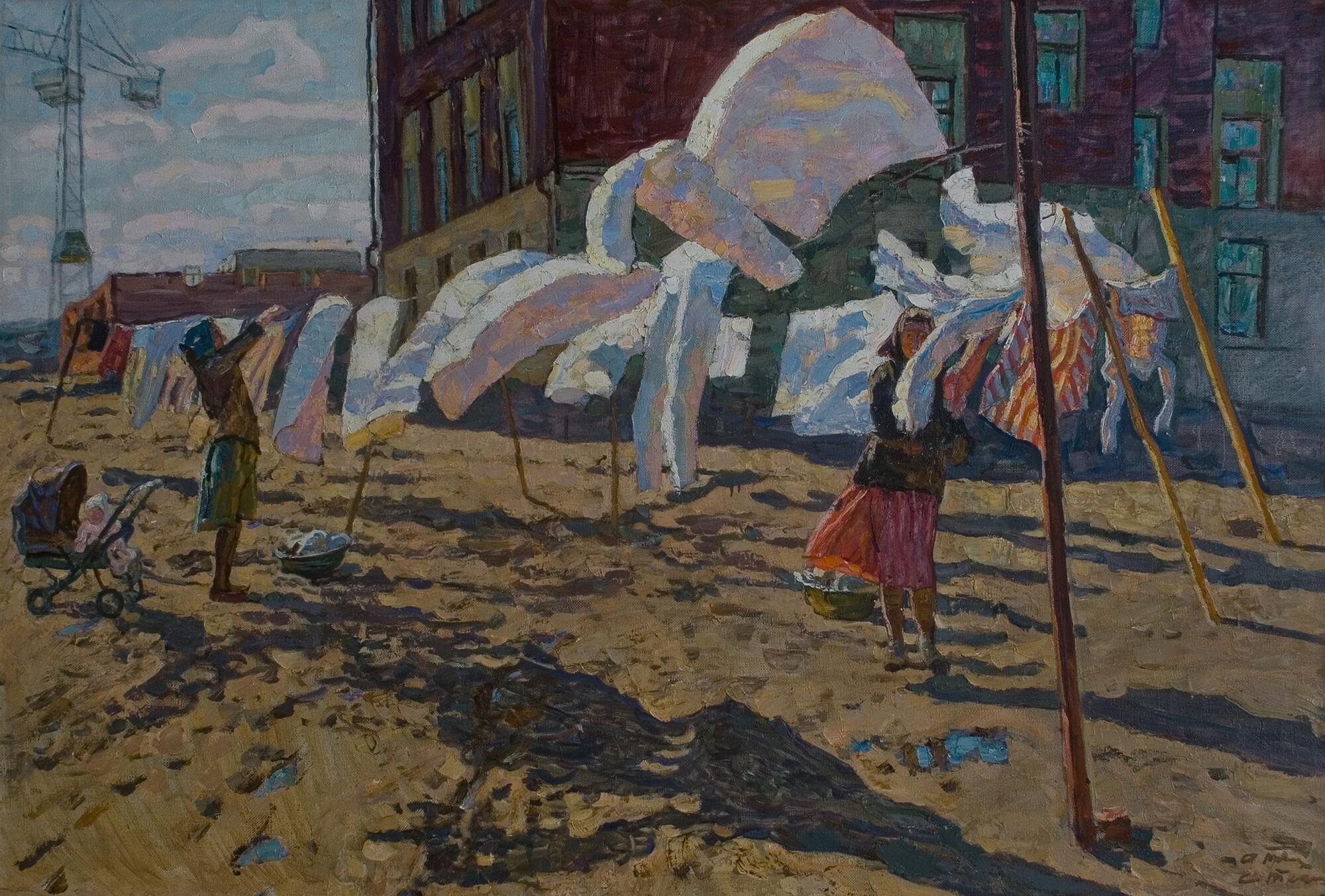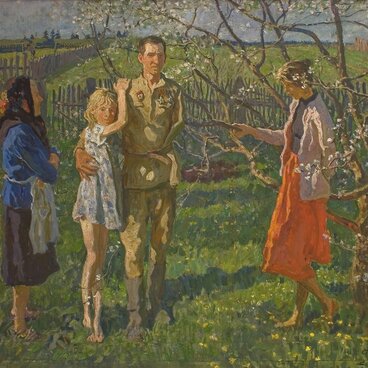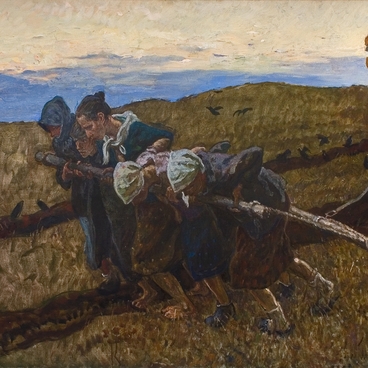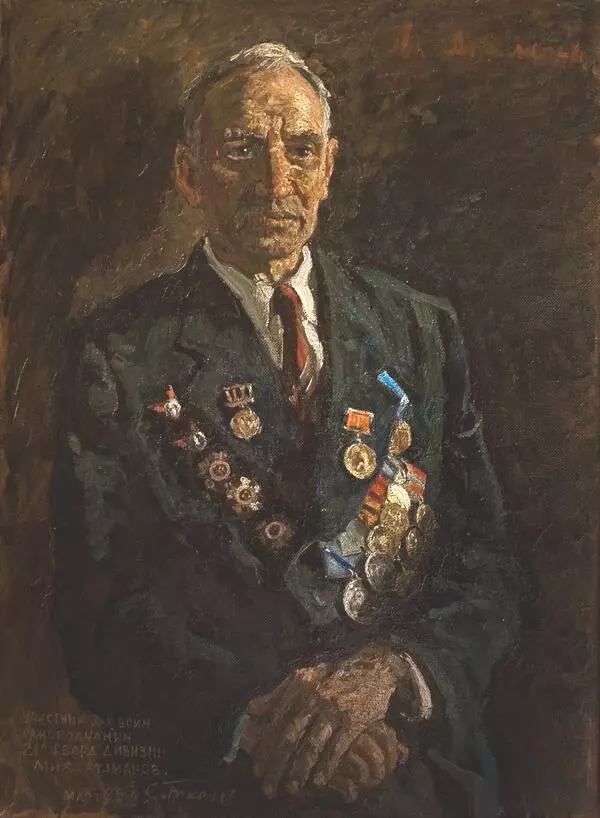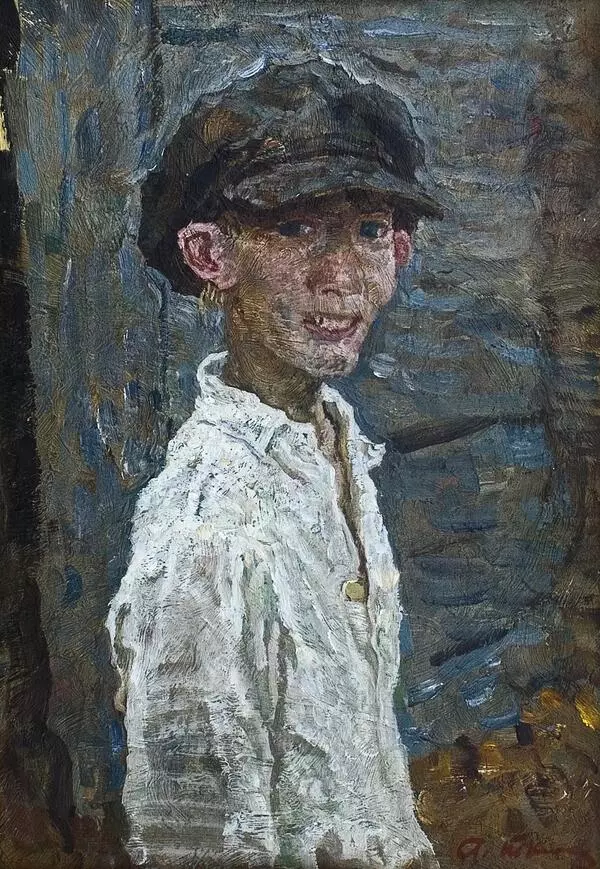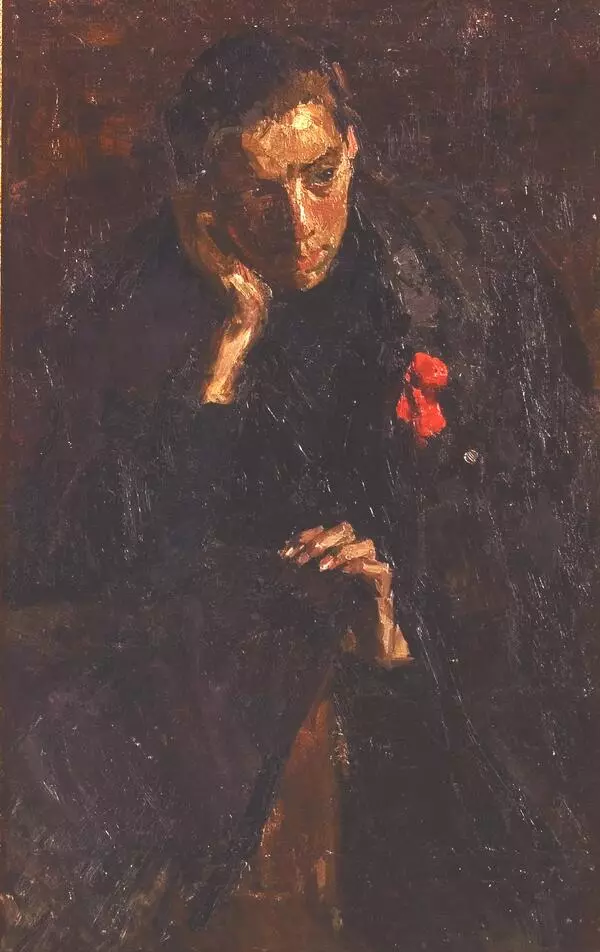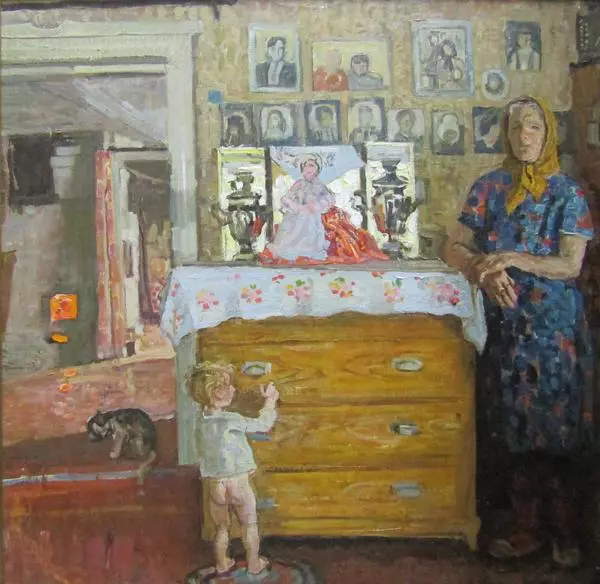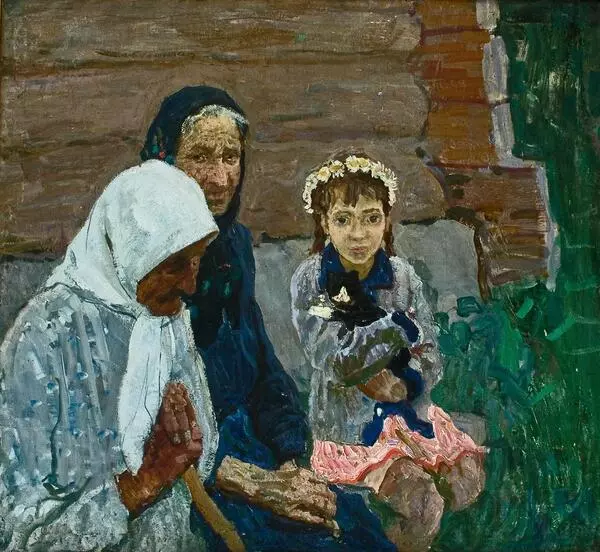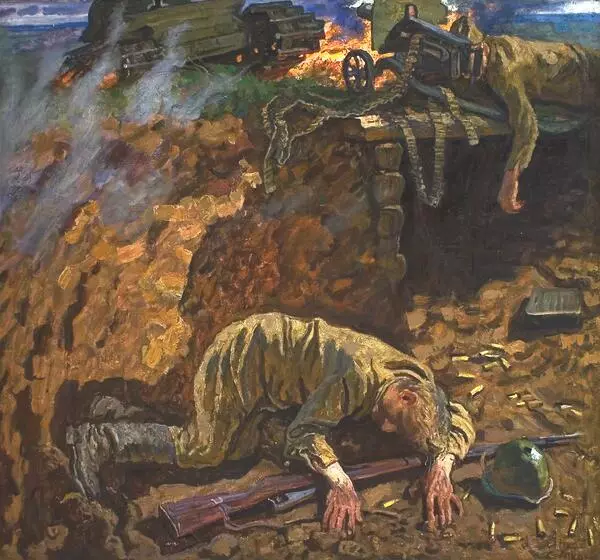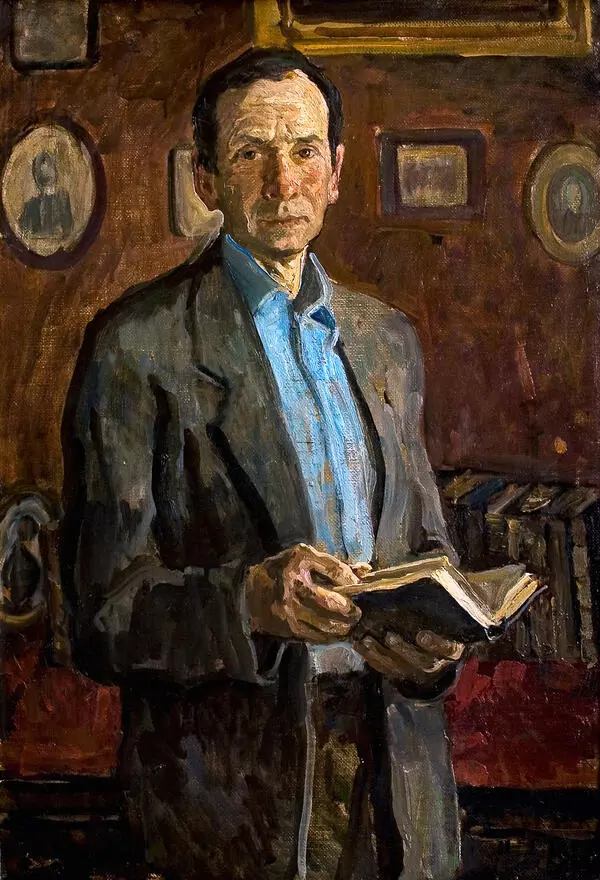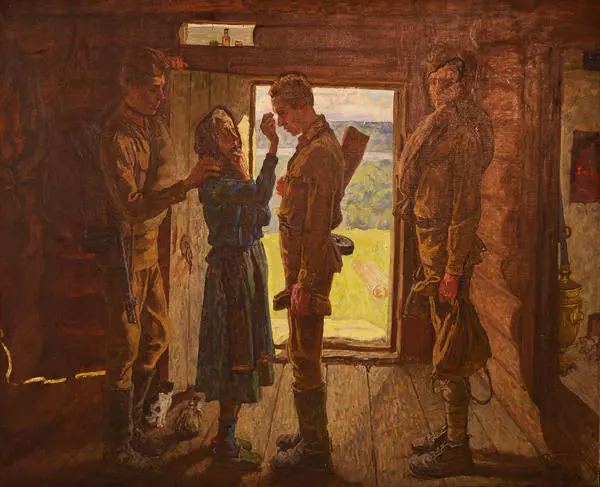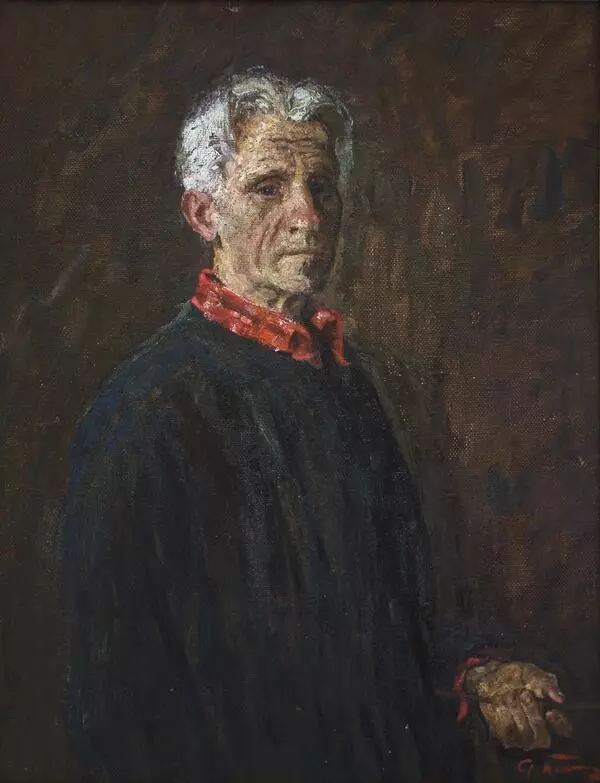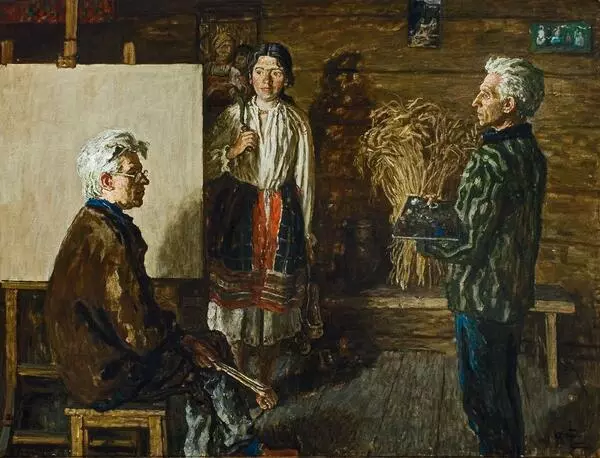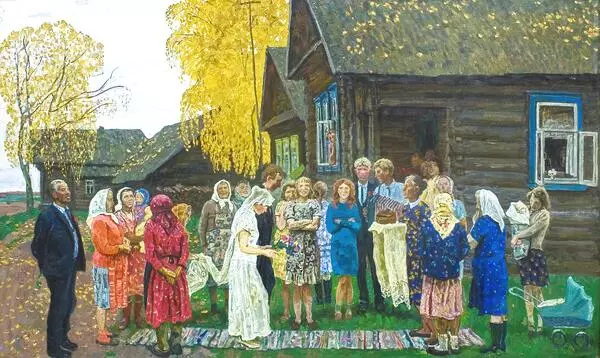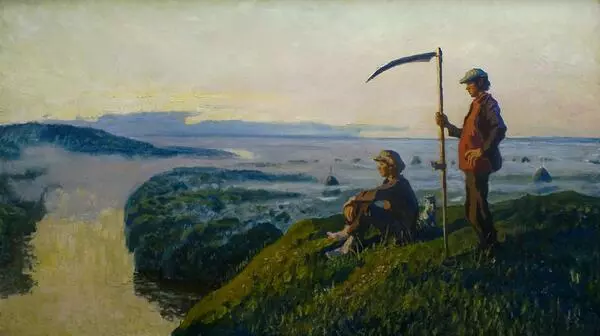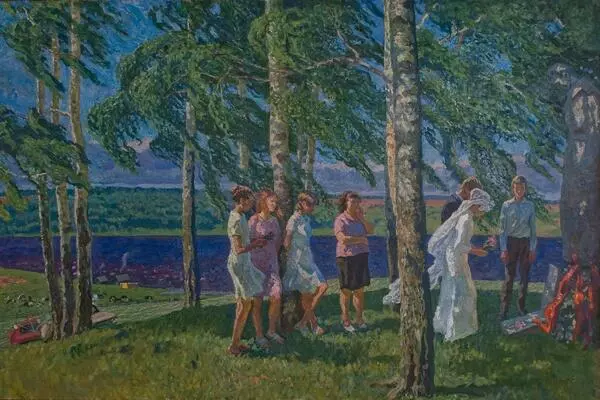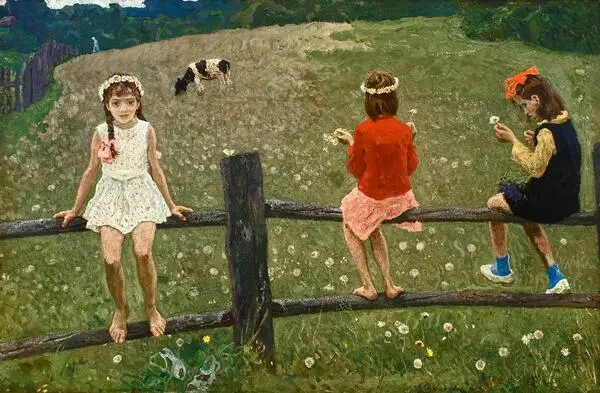Sergei and Alexei Tkachyov finished ‘A Windy Day’ in 1960. They worked on it in Podolsk, a town near Moscow, where they had moved from Minsk in 1955. An everyday scene that they often saw in the city - women hanging up freshly washed clothes in yards - appealed to them. The sunlight is blinding, the wind ruffles the hanging white sheets, and their long shadows jump all over the Playground. On the left of the painting, the artists include a tall crane, which signifies continuing construction in the area. The new yard has not yet been landscaped, and so the women have to tread on the wet ground, dodging the puddles.
Art historians have commented on the work’s rich color scheme. The brothers managed to recreate the light and air of a bright spring day. They captured the warm shimmering sunlight and the depth of the purple shadows. The light dances on the fluttering fabrics, with the dark-maroon earth reflecting shades of lilac and pink onto the sheets. Individual paint strokes are clearly visible.
Art historians have occasionally positioned the work of the Tkachyov brothers within impressionism. The term “impressionism” is derived from the French work “impression”. Impressionist paintings are not usually subject-orientated - instead, artists try to capture a fleeting impression of a moment. Impressionist artists’ first concern is to recreate the light and air, trying to convey the same lighting that they experienced when painting. They make good use of individually discernible brush strokes. ‘The Historical Path of Russian Impressionism’ was published with the assistance of Russia’s major museums in the early 2000’s. This edition’s collection of albums includes works by the Tkachyov brothers.
Whilst they certainly do employ a few of the key tenets of impressionism, many art historians disagree that their work can be labelled as impressionistic. For example, Professor Vladimir Sysoev has noted that the brothers’ paintings have closer ties to the genre of Russian pre-impressionism and artists such as Ilya Repin, Isaac Levitan and Vasily Perov. Regarding ‘A Windy Day’, he said that at first glace it is impressionistic. However, it contains something alien to impressionism - a link with the country’s life and the issues faced by its people.
Art historians have commented on the work’s rich color scheme. The brothers managed to recreate the light and air of a bright spring day. They captured the warm shimmering sunlight and the depth of the purple shadows. The light dances on the fluttering fabrics, with the dark-maroon earth reflecting shades of lilac and pink onto the sheets. Individual paint strokes are clearly visible.
Art historians have occasionally positioned the work of the Tkachyov brothers within impressionism. The term “impressionism” is derived from the French work “impression”. Impressionist paintings are not usually subject-orientated - instead, artists try to capture a fleeting impression of a moment. Impressionist artists’ first concern is to recreate the light and air, trying to convey the same lighting that they experienced when painting. They make good use of individually discernible brush strokes. ‘The Historical Path of Russian Impressionism’ was published with the assistance of Russia’s major museums in the early 2000’s. This edition’s collection of albums includes works by the Tkachyov brothers.
Whilst they certainly do employ a few of the key tenets of impressionism, many art historians disagree that their work can be labelled as impressionistic. For example, Professor Vladimir Sysoev has noted that the brothers’ paintings have closer ties to the genre of Russian pre-impressionism and artists such as Ilya Repin, Isaac Levitan and Vasily Perov. Regarding ‘A Windy Day’, he said that at first glace it is impressionistic. However, it contains something alien to impressionism - a link with the country’s life and the issues faced by its people.
